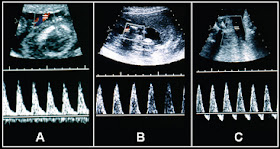The American
College of Obstetricians and Gynecologists have updated its practice guidelines
about managing Nausea and Vomiting in Pregnancy, published in the January
issue of Obstetrics & Gynecology.
The
guidelines replace the earlier document published in September 2015.
Nausea and
vomiting of pregnancy affects nearly 50%-80% of women and ACOG urges
obstetrician to start the treatment early before it progresses to hyperemesis
gravidarum. "Hyperemesis gravidarum is the most common indication for
admission to the hospital during the first part of pregnancy and is second only
to preterm labor as the most common reason for hospitalization during
pregnancy," they write.
The authors
draw attention to the importance of timing of the onset. They explain "The
timing of the onset of nausea and vomiting is important — symptoms of nausea
and vomiting of pregnancy manifest before 9 weeks of gestation in virtually all
affected women. When a patient experiences nausea and vomiting for the first
time after 9 weeks of gestation, other conditions should be carefully
considered in the differential diagnosis. A history of a chronic condition
associated with nausea and vomiting that predates pregnancy should be sought
(eg, cholelithiasis or diabetic gastroparesis)."
Level A
recommendations (good and consistent scientific evidence):
Treatment
should always be started with Vitamin B6 (pyridoxine) alone or
in combination with doxylamine as the first line therapy, as it is safe and
effective.
Women should
be encouraged to start the pregnancy multivitamin 1 month before conception as
it is known to decrease the incidence and severity of nausea and vomiting of pregnancy.
ACOG recommends
avoiding antithyroid therapy for the transient gestational thyrotoxicosis or
hyperemesis gravidarum and urges physicians to only use supportive therapy.
Level B
recommendations (limited or inconsistent scientific evidence, include):
Ginger has
been found to be effective in some cases of nausea and vomiting and it is
recommended as non-pharmacologic therapy.
Methylprednisolone
is found effective in some refractory cases of nausea and vomiting of pregnancy,
but it should only be used as a last resort, when other treatments have been
ineffective.
Level C
recommendations (based on consensus and expert opinion):
Intravenous
fluid support should be offered to patients who exhibit sign of dehydration and
are unable to tolerate oral fluids.
Dextrose and
vitamins should be included in the therapy for prolonged vomiting to correct
ketosis and vitamin deficiency, but always administer thiamine before dextrose
infusion to prevent Wernicke encephalopathy.
Enteral tube
feeding (nasogastric or nasoduodenal) should be started as first line therapy
in women with hyperemesis gravidarum who fail to respond to oral medication.
Peripheral parenteral nutrition should be used as last resort as it is
associated with significant maternal morbidity.
Treating the
nausea and vomiting of pregnancy at the very start may prevent it from
progressing to hyperemesis gravidarum.
The bulletin
also recommends that after the initial workup and hospitalization rules out
other comorbidities as cause of vomiting, patient can have the rest of
treatment at home too.
Finally, the
authors concluded, “Nevertheless, the option of hospitalization for observation
and further assessment should be preserved for patients who experience a change
in vital signs or a change in mental status, continue to lose weight, and are
refractory to treatment."


























